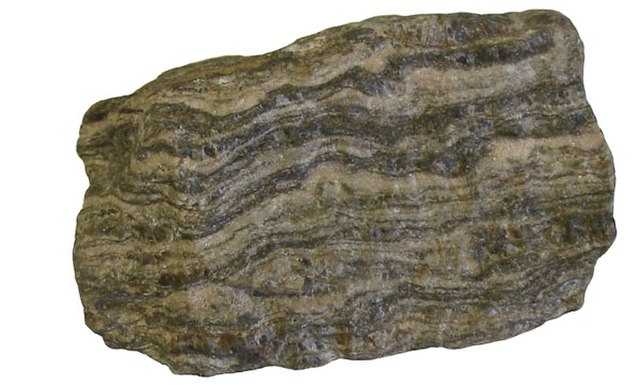Quartzite is a hard, non-foliated metamorphic rock which was originally pure quartz sandstone. Sandstone is converted into quartzite through heating and pressure usually related to tectonic compression within orogenic belts. Pure quartzite is usually white to grey, though quartzites often occur in various shades of pink and red due to varying amounts of hematite. Other colors, such as yellow, green, blue and orange, are due to other minerals.
Quartzite, containing darker bands of phengite and chlorite, from Maurienne Valley in the French Alps
Quartzite can have a grainy, glassy, sandpaper-like surface
Abandoned quartzite mine in Kakwa Provincial Park, British Columbia, Canada
Quartzite statue of an Egyptian Pharaoh, 14th century BCE
Foliation in geology refers to repetitive layering in metamorphic rocks. Each layer can be as thin as a sheet of paper, or over a meter in thickness. The word comes from the Latin folium, meaning "leaf", and refers to the sheet-like planar structure. It is caused by shearing forces, or differential pressure. The layers form parallel to the direction of the shear, or perpendicular to the direction of higher pressure. Nonfoliated metamorphic rocks are typically formed in the absence of significant differential pressure or shear. Foliation is common in rocks affected by the regional metamorphic compression typical of areas of mountain belt formation.
Gneiss, a foliated metamorphic rock.
Quartzite, a non-foliated metamorphic rock.





